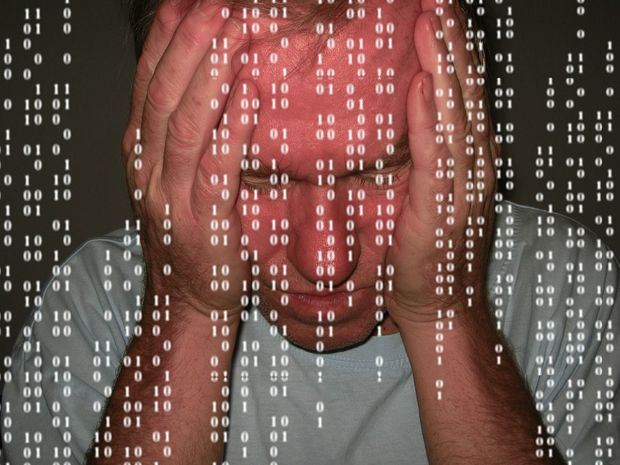If they’re not actually victimising people online, why should they worry? Should the new Harmful Digital Communication Act prompt a rethink of how news media exploit social media?

A new law targeting online bullying came into being this week.

Joanna Norris. Photo: Fairfax NZ
Mediawatch report on the issue and discuss the new law with Joanna Norris, the editor of The Press and chair of the New Zealand Media Freedom Committee.
The Harmful Digital Communications Bill was passed with a huge majority in Parliament. Only five MPs voted against it. The huge margin was no surprise. In the wake of the Roastbusters scandal, and other cases of online victimisation which have made headlines recently, most political parties wanted to do something about the rise of a worryingly nasty online culture in New Zealand. To make that point, MPs from several parties read out mean tweets they've received in an online video for stuff.co.nz
One MP in the video voted against the bill last Tuesday. The Green Party's Gareth Hughes said it limited freedom of expression not just for individuals - but for the media too. The media have also played a big part in exposing the harm of online victimisation. The New Zealand Herald ran an anti-bullying campaign in 2012 including a stark story headlined: 'Bullies turn Cyberspace into World of Cruelty' and the chief coroner Judge Neil McClean linked cyber-bullying to youth suicide.
Shortly after that the Justice Minister at the time, Judith Collins, announced the fast-tracking of the bill that became law this week. But the law in fact has been five years in the making. It kicked off when Judith Collins' predecessor Simon Power described cyberspace as "the wild west" back in 2010, and told the Law Commission to investigate what should be done about it.
In the end, it recommended two things: a tribunal with the power to take grossly unfair material down from the net, and one single regulator to uphold standards for all media, even bloggers dealing in commentary and dissemination of news and current events.
The latter idea alarmed media outlets who prefer to regulate themselves. The broadcasters even clubbed together to create their own body to handle complaints about content on their own websites - the Online Media Standards Authority. It did the trick. The Harmful Digital Communications Bill only targeted cyber-bullying - and didn't propose any change to media regulation at all.
A submission on the bill by the Media Freedom Committee (PDF) argued news media should not be lumped in with the bloggers and ordinary citiziens on social media under this new law. They are already accountable to standards bodies like the BSA, OMSA and Press Council, they argue.
But politicians did not accept the Law Commission's recommendation that the news media should be exempt, and now the media fear the new law will be used against them by those with an axe to grind.
What does the Act do?
The Act gives a web host or publisher two days to respond to a complaint from someone offended by comments about them - or images of them - published online.
If the host gets no response from the author, it can simply take down the offending material - the so-called 'safe harbour' provision.
If the offending material remains online, the offended party can also complain to an approved agency - yet to be appointed - which will try to mediate a settlement. But if the parties can't agree, the web host and the author of the allegedly harmful comments may face criminal charges.
Implications
This could mean social media sites and bloggers routinely take down contentious comments after complaints, to avoid the risk of prosecution and the hassle of dealing with the process.
The mainstream media may also feel the pressure to self-censor. The law prohibits digital communications that make a false allegation, but it's not always easy for a publication to determine that within looming deadline.
In an editorial, The Press has described the new statute as "a menace to mainstream broadcasters and publishers".
And pointed out this problem:
A complainant will not be able to obtain any redress unless he or she can show that the offending digital communication has caused harm. But harm has also been given an alarmingly expansive definition by the statute. It is defined as anything that causes a complainant "serious emotional distress", a disconcertingly subjective notion.
TV producer Tim Watkin said political leaders who condemned the Charlie Hebdo atrocity as an assault on free speech had now backed a law which "may undermine journalists' ability to critique, cartoonists' ability to lampoon -- and satirists' ability to just take the mick".
If a current affairs investigation into a dodgy finance company offends that financier or his family... if a Fair Go report distresses some con man... or if a cartoon emotionally harms a pious soul, they now can use the law to ask for the offending item to be taken offline.
But on the TV current affairs programme Tim Watkin produces, the current justice minister Amy Adams insisted scribes, scribblers and jokers in the media need not worry.
I'm very comfortable that the terms under the legislation make it quite clear that having a joke at someone's expense will not meet the threshold of causing the sort of harm that the bill anticipates. I have no concern at all that genuine investigative information revealing things in the normal course of news media would be captured by this law. That is not the intent.
The media can also be reassured that a District Court judge would need very strong grounds to override the Bill of Rights Act to order the media to take contested content off their websites.
On pundit.co.nz, barrister and media law expert Steven Price said while there are reasons to worry about how the law might apply in practice, those "happy to scare-monger about it never seem to point out the pretty significant limitations and thresholds"
And he listed some significant factors to be considered in any given case.
- (a) the content of the communication and the level of harm caused or likely to be caused by it:
- (b) the purpose of the communicator, in particular whether the communication was intended to cause harm:
- (c) the occasion, context, and subject matter of the communication:
- (d) the extent to which the communication has spread beyond the original parties to the communication:
- (e) the age and vulnerability of the affected individual:
- (f) the truth or falsity of the statement:
- (g) whether the communication is in the public interest:
- (h) the conduct of the defendant, including any attempt by the defendant to minimise the harm caused:
- (i) the conduct of the affected individual or complainant:
- (j) the technical and operational practicalities, and the costs, of an order:
- (k) the appropriate individual or other person who should be subject to the order.
It seems unlikely the courts will soon be clogged with cases against the news media. Those who complain to the Broadcasting Standards Authority but disagree with its decision can appeal it in the High Court if they choose.
Few people take it that far. But in fact, it may be good for the media if they did.
The Harmful Digital Communications Act will be reviewed next year, and some kind of test case in the meantime - to establish what "serious emotional distress" really means - would be handy for that.
Media in glass houses?
Some recent controversies show the media themselves need to rethink the way they routinely harvest material on social media as a source of stories which are bound to cause distress for the people involved.
When Harmful Digital Communications Bill was in Parliament for its second reading in April, one such case was all over the news media: the so-called "office sex romp" in Christchurch. Images of the sexual encounter spread rapidly on social media, and then news media throughout the world.
The couple concerned were not named but they no longer work for the same company and one has left the country only to find that the local press in her hometown in the UK has been running the story of her return.
At the time, this pursuit of the "sex romp woman" was called cyberbullying by some, and Mediawatch wondered whether stories like this might prompt the government to focus on the news media in their efforts to curb online victimisation.
And it's not only news media who can't resist piggybacking on social media for good yarns - even if they are clearly distressing for individuals. Last year, several New Zealand radio stations' websites posted nude photos of celebrities, including actress Jennifer Lawrence. It was clear they were illegally obtained and made public without consent, but they also knew the dodgy pictures would drive traffic to their websites.
ZMFM linked to them with: "You're gonna wanna see this" and Radio Hauraki encouraged listeners to take a really close look with this message on Twitter:
So these photos of Jennifer Lawrence - apparently hacked from her iCloud account - have just leaked online. Is it really her or some bad photoshop?
The Edge suffered an online backlash and apologised.
We made a mistake yesterday by following what many other New Zealand and overseas websites had done and posting the photos of Jennifer Lawrence. We are reviewing our pre-vet systems to avoid any similar mistakes in the future.
But all those music stations belong to major commercial radio companies which agree to abide by the codes of the Broadcasting Standards Authority and the OMSA.
Last year, nzherald.co.nz published a naked selfie of All Black Aaron Smith. It was cropped for decency on the site, but not on Twitter when reposted by the story's author Rachel Glucina.
Lawyer Rick Shera gave this view at the time:
It surprises me that someone employed by a mainstream media outlet would tweet such a photo but maybe that is the type of buzz Ms Glucina is there to generate. Putting to one side journalistic ethics and taste however, the question is whether she and others who then retweeted or published the image crossed a legal line in doing so.
The Harmful Digital Communications Act draws another legal line to cross in cases like these.

